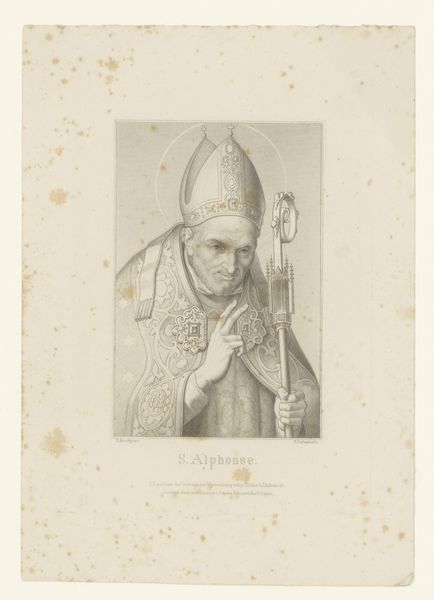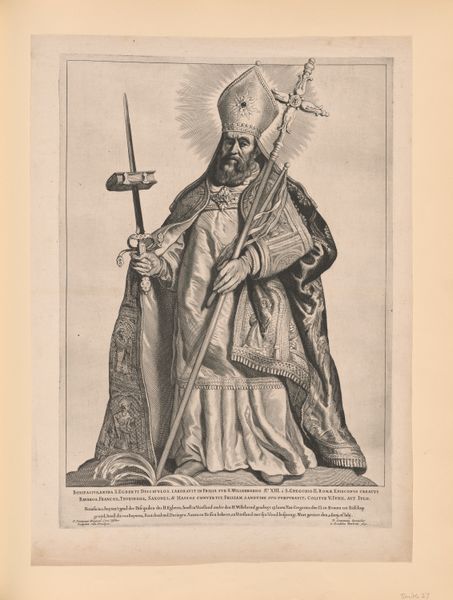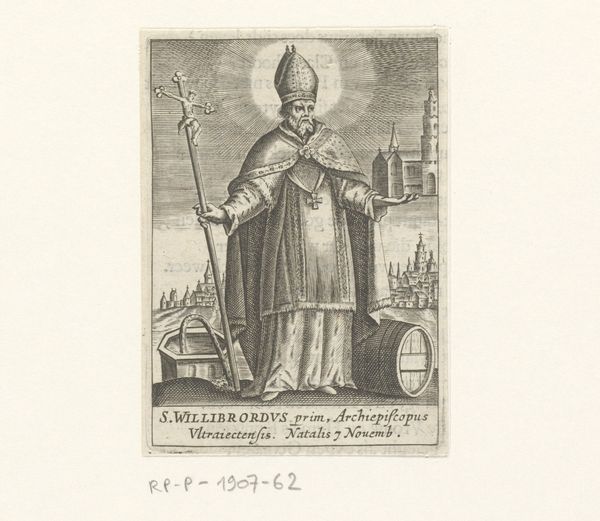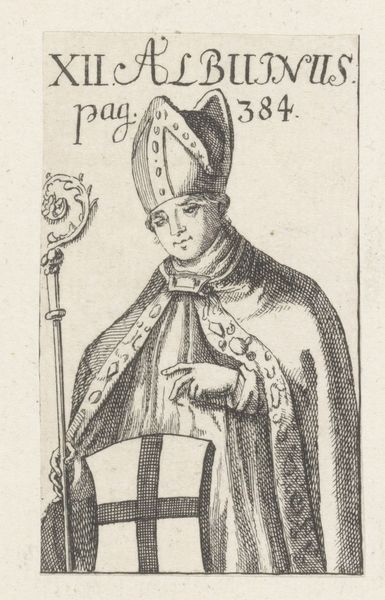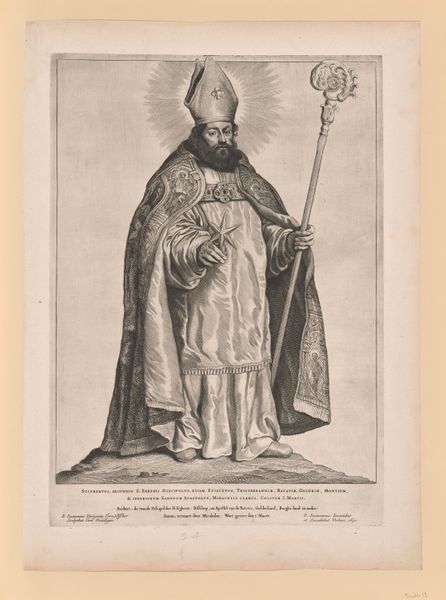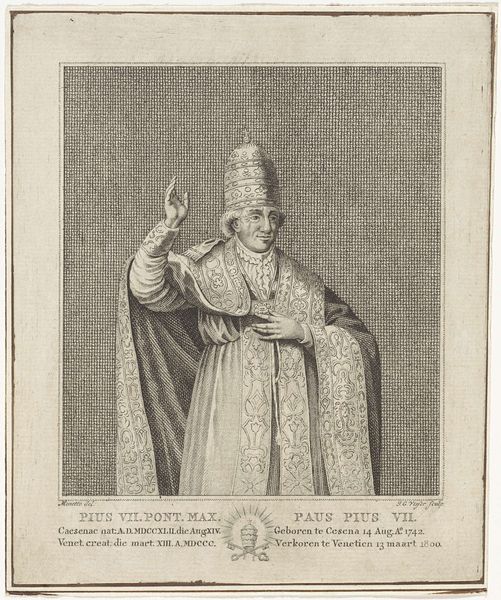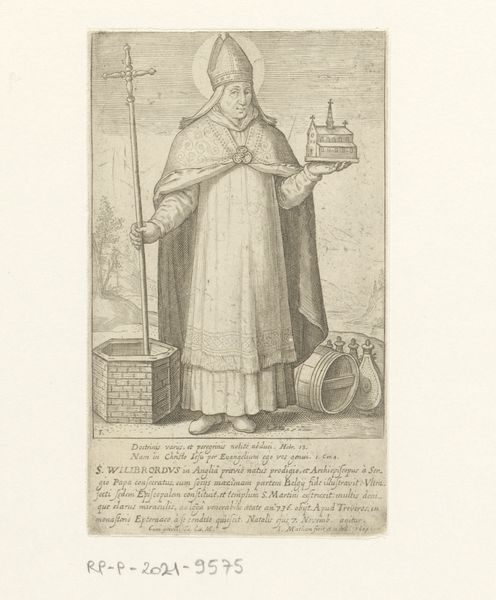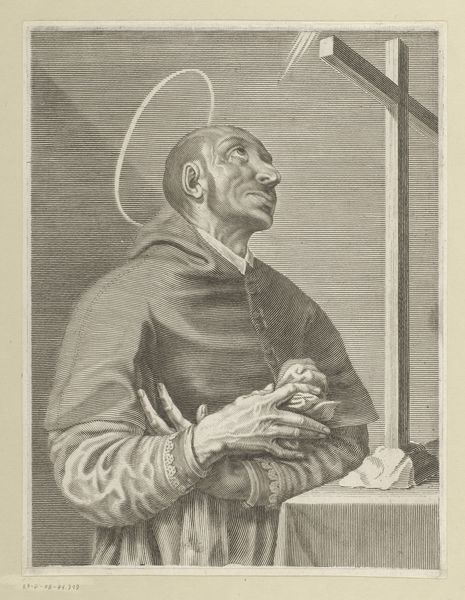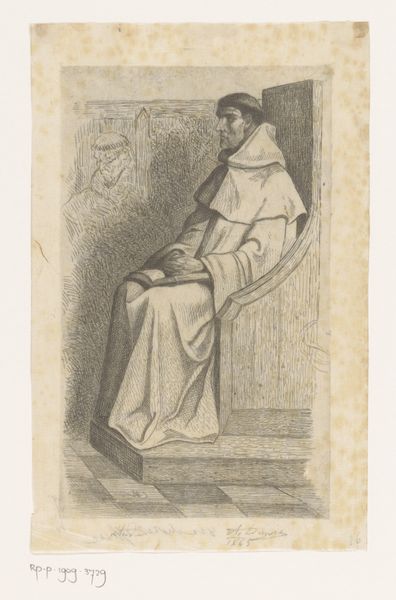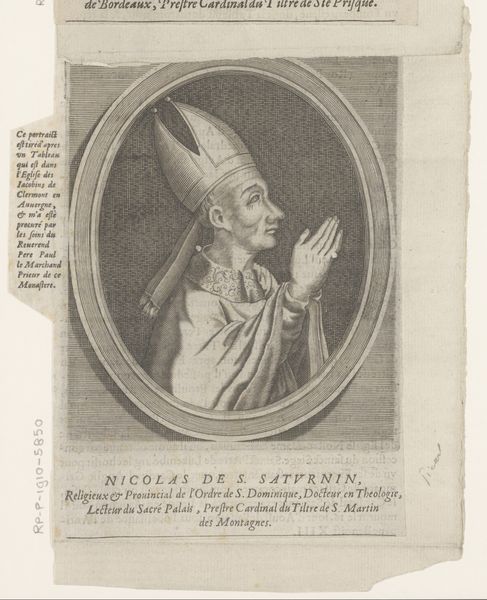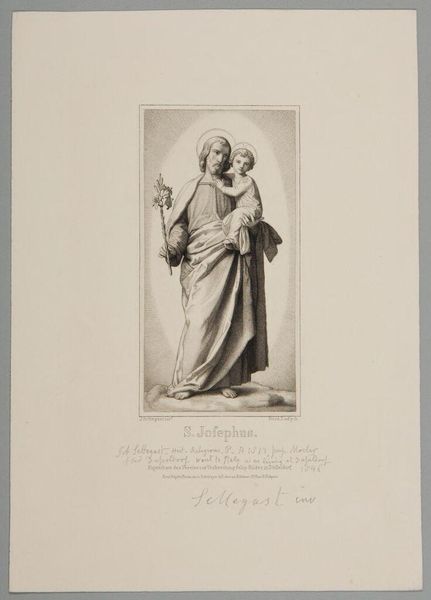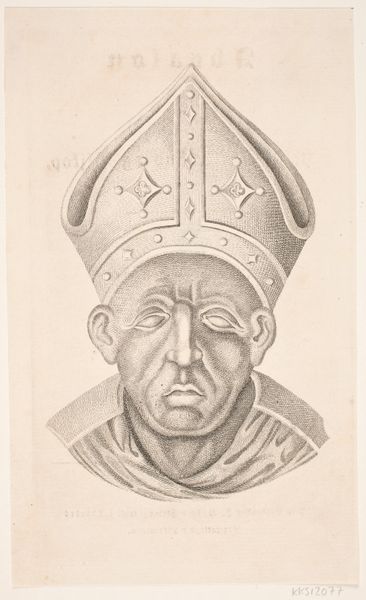
Copyright: CC0 1.0
Curator: Let's consider how Steifensand's "Saint Alphonse" reflects the 19th century's complex relationship with religious authority and its intersection with emerging nationalist sentiments. What strikes you most about this depiction? Editor: It's a portrait of Saint Alphonse, a detailed engraving. It feels very formal, very… official. How would this image have been understood in its time? Curator: Well, religious imagery often served as a tool for reinforcing social hierarchies. Consider the rise of bourgeois culture and its appropriation of religious symbols for legitimization. How does Alphonse's attire contribute to this dynamic, do you think? Editor: His garments are very elaborate and detailed, suggesting wealth and status. So, the image is both devotional and a display of power? Curator: Precisely. It invites us to examine how representations of sainthood were mobilized to uphold specific social and political agendas. Editor: I see, it's more than just a portrait; it's a statement about power and identity in a changing world. Curator: Indeed. It reminds us that art is never created in a vacuum but rather participates in ongoing dialogues about values and power.
Comments
No comments
Be the first to comment and join the conversation on the ultimate creative platform.
